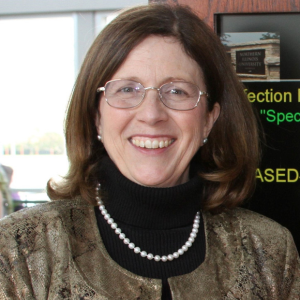An All-Out Attack on Falls
| Our falls-prevention program began in 1998 and has progressed and grown over the years. We performed an intense review and revision of the program beginning in the last quarter of 2002 and finishing at the end of 2003. We found that a significant decrease in falls can be achieved using a formal program. Our plan is to build on this success by exploring ways to improve the program continuously. The Problem Resident falls are related to multiple factors, and no one intervention on its own may be successful if other relevant factors aren’t identified. Based on a review of clinical and statistical data, quality indicators, resident assessments and resident occurrences, and quality-assurance reports, our facility decided to focus on a project to improve resident safety and decrease the overall number of resident falls. Our facility consists of four populations, each with different needs. Two of the populations are largely mobile, although many of these residents have cognitive impairment. Three subacute units have clients/residents who, although often independent prior to hospitalization, now have limitations they may not fully recognize. Because these factors contribute to a high risk for falls, there is facility-wide potential to involve all residents in a falls-prevention program. |
|
| Planning and Implementation Strategies In 1998, a newly formed management team that included the Assistant Administrator, Director of Nursing, Director of Rehabilitation, and Director of Quality Assurance/Staff Development reviewed many areas of the organization for possible quality-improvement projects. The area of “resident occurrences” (unexpected, unintended events that may or do cause injury) was one. We began developing a risk management team; it included the Director of Rehabilitation, who headed the team; nursing staff; and several other staff members. During the years since, it has grown to include representatives of Social Services, Dietary, Housekeeping, Recreation, Engineering and, most recently, the Medical Director. We decided in the last quarter of 2002 to develop a new process to further evaluate our systems and processes. We wanted to improve resident safety and, more specifically, focus on decreasing the number of resident falls, rather than focusing on the broader target of reducing resident accidents and incidents. Our overall objective was to decrease falls by approximately 20% in one year. The project began in January 2003 and continued through the end of the year. We used a process published by the Joint Commission on Accreditation of Healthcare Organizations, as well as established quality-assurance principles. Based on the concept of Failure Mode and Effects Analysis (FMEA), strategies involved creating a timeline (figure 1), flowcharts (figure 2), a focus team with specific roles and responsibilities, and audit tools to help measure the outcome. The use of flowcharts allowed us to analyze any areas that might cause or lead to failure (in this case, falls). These identified areas could then be changed or enhanced, as appropriate. Through the use of the flowcharts and the FMEA model, we were able to redesign our falls-management process and put into effect a new approach that would hopefully lead to the desired reduction. Barriers Identified |
|
| To reach our outcomes goal, the above areas all needed improvement. Other possible barriers to success would include staff reluctance to accept the plan, unavailability of resources, educational program shortfalls, and program structural issues. With all these difficulties in mind, we conducted a preliminary discussion of the project on December 3, 2002. We knew that our entire process for preventing falls and recurrences needed to be reviewed and reevaluated. This would include the method of identifying at admission the resident as high-risk for falls, developing a care plan that would prevent falls and, if the resident does fall, implementing a new process, including investigation, to prevent recurrences. On January 7, 2003, we formed a team consisting of the Assistant Administrator, who served as chairperson and facility Safety Officer, and was responsible for budgetary allowances and overseeing the entire process; the Director of Nursing/ADNSs, who would be responsible for reviewing the Accident/Investigation Process and the nursing component of the Care Planning Process; the Director of Rehabilitation, who served as chairperson of the risk management meeting and would be responsible for evaluating the risk management process and its implementation, as well as monitoring use of new resident-assist devices; a designee of the Quality Assurance/Performance Improvement/Staff Development Department, who would be responsible for the final review of occurrence reports, evaluating educational needs, and identifying trends related to falls; and the Risk Management Coordinator, who has since expanded her role to become Clinical Care Coordinator and is an integral part of the team responsible for reviewing all occurrences, providing ongoing staff education on the investigative process, analyzing the use of proactive plans/instructions, and identifying patterns/trends needing attention. Other members of the team who have become involved on a daily basis, especially during care plan meetings and weekly risk management meetings, are the nursing staff, rehabilitation staff, dietitians, social workers, recreation staff, and residents and families (when appropriate). Their collective responsibilities are to evaluate the resident’s plan of care for falls prevention or revise the plan of care if a fall does occur. By using FMEA, we were able to dissect and analyze each area of failure, rate each area for the likelihood that a failure would occur, and determine, if it occurred, how severe the effects would be for the resident. After this analysis, we would then be able to prioritize the most important areas to be addressed (i.e., “risk priority number,” table 1). We should note that this approach was the culmination of years of development. During the concept’s early years-the late 1990s-residents who had experienced multiple falls were reviewed at a weekly team meeting aimed at preventing recurrences. We went on to bring residents having experienced one fall to the meeting. As of June 2003, we began to review all new admissions that had been identified as high-risk and to invite them to the meeting to develop and individualize their plans of care and create proactive plans to protect them from falls. Meanwhile, the team has expanded to include input from Housekeeping and Engineering, both of which have contributed helpful information about our residents. |
|
Identifying outcomes is an important part of a project such as this. When we began in January 2003, we developed a Prevalence of Falls Audit Tool that allowed every department to audit and analyze specific issues involved in a fall in order to establish department-specific patterns and trends. The audit asked questions such as:
Audit findings that led us to implement changes in our process starting in 2002 and continuing through 2003 included: 1. an evident correlation between medical problems and falls (i.e., abnormal labs, weight loss, and gait imbalance). We therefore in-serviced staff to be alert to these factors. Our physicians, too, have focused on the various clinical factors contributing to falls. The resulting staff awareness has heightened our ability to implement safety measures and preventive interventions, thus decreasing and preventing occurrences from taking place. 2. decreased vision as a contributing factor. This has led to the use of magnifiers, filters, and various types of supportive lighting. 3. falls involving residents who were deemed independent by a physical therapy assessment that did not identify the residents at a risk for falls. Therefore, an assessment focused on screening ambulatory residents for risk factors was initiated in June 2003. This additional information has heightened caregiver awareness of ambulatory residents’ risk for falls. 4. attempts by some subacute residents to perform independent ambulation and transfer prematurely. Noting this trend and behavioral pattern, our rehabilitation department placed a heightened focus on resident education and continual reminders not to attempt mobility without staff assistance until they were cleared to do so. 5. safety issues with residents who were considered to be relatively independent but nevertheless frail or experiencing mild cognitive issues. These were addressed at resident council in a special program presented by the Rehabilitation Director. 6. evidence that for many dementia residents, education is not an option. To deal with this, we concentrated on using staff-alert devices, making safety-sensitive environmental modifications, and developing recreational and diversional activities to be provided by the interdisciplinary team. 7. wheelchair positioning assessments needed to become a component of the initial occupational therapy assessment of all admissions, and continued regularly depending on resident need. |
|
| Quarterly statistical data based on the audit tools we developed were used as an internal benchmark to determine the effectiveness of the new process. We used other published statistical data, such as the CHSRA reports, to compare the facility’s performance with that of other nursing homes. According to current CHSRA data, approximately 14.6% of the population in the comparison group of 200 facilities statewide experienced a fall during the 12-month review period. In comparison, our facility is below the average; nevertheless, we chose to attempt to reduce the total number of falls even more. Results of audit findings based on our “potential failure modes” were compiled and analyzed quarterly, and comparisons were made quarter to quarter. Comparisons between 2002 and 2003 were made of the total number of falls from month to month, quarter to quarter, and year to year. In addition, comparisons of the number of resident falls per patient care days were done for the same period. The results of these studies are discussed under “Program Outcomes.” |
|
|
| For further information, phone Toni Mooney, RN, Vice-President of Nursing/Performance Improvement at (718) 405-3636. To comment on this article, please send e-mail to mooney0904@nursinghomesmagazine.com. For reprints in quantities of 100 or more, call (866) 377-6454. |
Program Staff Toni Mooney, RN, Vice-President Nursing/Performance Improvement Randi Feigenbaum, RN, Director of Nursing Alice Massa, Director of Rehabilitation Hilary Rizzo, RN, Assistant Administrator Roy Goldberg, MD, Medical Director Marie Knapp, RN, Risk Management/Clinical Care Coordinator Program Directors Team Leaders Team Liaisons Staff Development Note: A successful program would not be possible without all staff from Dietary, Social Services, Rehabilitation, Nursing, Medical, Resident Assessment, Security, Case Management, Performance Improvement, Staff Development, Engineering, Housekeeping, and Admissions, who are involved with our residents and families on a daily basis. We extend special thanks to Morris Tenenbaum, CEO, and Alexander Stern, Administrator, whose support and encouragement are invaluable in every project we undertake. |
I Advance Senior Care is the industry-leading source for practical, in-depth, business-building, and resident care information for owners, executives, administrators, and directors of nursing at assisted living communities, skilled nursing facilities, post-acute facilities, and continuing care retirement communities. The I Advance Senior Care editorial team and industry experts provide market analysis, strategic direction, policy commentary, clinical best-practices, business management, and technology breakthroughs.
I Advance Senior Care is part of the Institute for the Advancement of Senior Care and published by Plain-English Health Care.
Related Articles
Topics: Articles , Clinical











